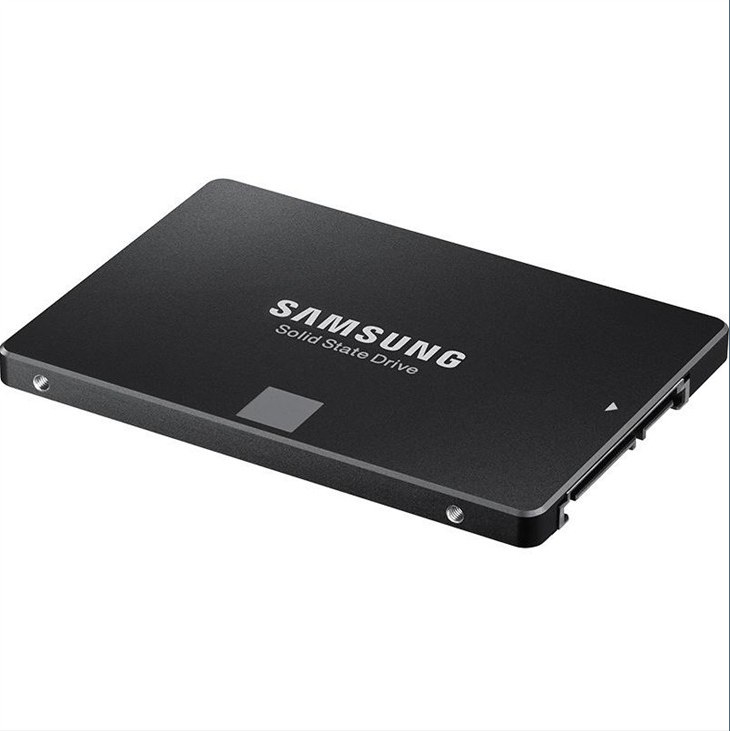Samsung 980Pro SSD review How much stronger than other hard drives is it worth buying
 2022-06-10 16:55:07
2022-06-10 16:55:07  684
684[PConline Review] The Samsung 980 PRO that I had been thinking about before finally came to me. The official nominal continuous reading of 7GB/s and writing of 5GB/s, what is the concept? Copy a high-definition 2GB love action second transmission, full HD 4K, 20GB in seconds. Samsung's PRO series SSDs were able to dominate the consumer SSDs of the time with each generation. For example, the 970 PRO was the most awesome in the consumer PCIe 3.0 SSD market at the time, and no one objected.

However, last year PCIE4.0 and X570 motherboards were launched simultaneously, a large wave of PCIe 16.4 SSDs equipped with Phison E0 main control emerged, Gigabyte Corsair Viking Gang have, sequential reading on 5G, writing can also reach 4G more, but 4K speed and 970 PRO is almost the same, 970 PRO can also be the king for a while in this PCIe 4.0 starting time. However, PRO is a model that dominates consumer-grade SSDs after all, and it is obviously not enough to take some real guys. Consumers who eat melons are still looking forward to the 980 PRO and want to see what kind of products it can make in PCIe 4.0.
But for everyone who eats melons, Samsung's OEM big ship has always been very fragrant, and many people also want to get on the OEM after the 980 PRO, but 980 PRO, you may really not have to wait for the big ship. Here is the CDM 1G diagram of the four products reviewed this time, namely Samsung 980 PRO, Yingchi HOF PRO, Kingston KC2500 and Pukot M8V. I don't understand, I'll talk about it later, let's talk about the 980 PRO first.

980 PRO price dropped the altar, will the OEM be more fragrant?
What players most relish about the 970 PRO is that during the TLC period, it still used MLC particles, but the characteristic was expensive. It's not that you can't accept TLC, just like SMR and PMR of mechanical hard disks, and the cards and luxury cards in graphics cards, as long as you sell them cheap enough, in fact, consumers are very happy.
Then this time Samsung is also as everyone wishes, 1TB, 1899 yuan, which is a thousand yuan cheaper than the 970 PRO. With the Samsung brand, the name PRO, and the measured speed so fast, if you want to say that it is not fragrant, then maybe you are really not its target group.

Then the OEM version that many players care about is also sold in a certain treasure, PM9A1, 1TB sold to 1999 yuan, all aspects of the parameters are the same as 980 PRO, it is better to buy the official with a three-year warranty. Of course, the longer the OEM thing comes out, the more fragrant, especially when there is a big ship docking, those who are interested can be a waiting party.
Back to this product, the main control was upgraded from Phoenix to Elpis, the parameters are too smelly and too long to talk about, simply put, it is speeded up, supports more IO sequences, and the multi-concurrent task processing ability is better.

DRAM cache, a 1GB LPDDR4. Flash memory particles are two Samsung's sixth-generation V-NAND, upgraded from 9x layer to 1xx layer, characterized by speed up and power consumption.

CDM 1G file size, 980 PRO data is very invincible in all aspects, but the sequential reading does not reach 7000MB/s, is it false propaganda? The official nominal 7000MB/s, in fact, depends on the test scenario, the queue depth must run in Q32 to get the official nominal data, the old version of CDM has the option of Q32, and the 7.0.0 version removes this option.

However, the Q32 queue depth is very difficult to achieve for our use, and the general Q1 will be more consistent with the daily use, and the Q8 I set is used to simulate the peak situation of daily use, which is already relatively limited. However, even compared to the Q1, the speed of the 980 PRO is already better than that of the SSDs here.
INCREASING THE SIZE TO 64GB, THE 980 PRO'S SPEED IS BARELY THE SAME, JUST AS FAST. HOF PRO's sequential QD8 reading shows a large drop in speed. In addition, the reading and writing of 4KQD8 also has different degrees of slowdown. Then there's the PCIe 3.0 flagship representative KC2500, with almost no change in speed, and the speed also reaches the highest level of 3.0. Finally, there is the Pukot M8V, the speed is similar, no change.




After the four SSDs increased the capacity, the CDM performance of HOF PRO was relatively crotch-pulling. Later, we will continue to test the write speed performance of 4 SSDs for a long time.
ASSSD We mainly focus on the IOPS read speed of 4K QD1. The fastest is still 980 PRO, 4K reading can reach more than 2500,8 IOPS, and then decrease, HOF PRO second, about 7000,<>, KC<> third, about <>,<>, and finally Pukot M<>V, <>,<>. Maybe everyone has no concept of this, I think that if more than <>,<>, the impact on the game and boot is very small.

Then, everyone's favorite to watch the speed drop link. The most surprising thing about this link is HOF PRO, 200GB in length, writing a straight line, and the speed is close to 4000MB/s, which is completely different from the CDM result. Looking at the rest, the 980 PRO is 4000MB/s written to about 115GB and drops speed, followed by about 1750MB/s. The KC2500, the speed fluctuates a bit, dropping from around 142 to 2700 at 750GB. M8V is very stable, 8GB small drop speed to 400MB, for a SATA disk is just that.




Plug the disc in half and continue to test HDTune. The cache capacity of the 980 PRO is still about 115GB, and there is a small drop speed outside the slow, 1500. The speed of HOF PRO is still outrageous, I really have to use outrageous to describe this disk, around 167G from 4000 to 1000. KC2500 does not drop speed directly, and the minimum speed is at the beginning, and the whole writing process is about 750MB. M8V is still so stable, although slow, but indisputable with the world, plain is true.
Finally, IOMeter, custom 128KB size, QD32 continuous sequential write for half an hour test to test the real read and write performance of the particles. The 980 PRO is the fastest to write full disk and then write through grain, and the speed of final write through grain is about 2100MB. The Yingchi HOF PRO is relatively miserable, with only 500MB of writes after the cache is full. Finally, the speed of the write-through particle is around 960MB. The KC2500 has two drop speed ranges, one drop from 2800 to about 1300, and the second section drops directly to 700, which lasts until the full disc is written, and the particle direct writing speed is about 1300. M8V, very comfortable, next door NVMe hit the head and blood, here is still drinking tea and watching the play.




When running IOMeter, I recorded a wave of temperature by the way, room temperature 25°C, sandwiched by two large heat sources in the chassis, the maximum temperature of the 980 PRO is 68°C, HOF PRO 71°C, which is still measured in the case of faster read and write speed of the former. Then Kingston's disc is also more outrageous, equipped with TT custom heat sinks, and the temperature is only 45 ° C. M8V is not recorded because the software cannot read the data.
After the theoretical data is measured, the 980 PRO disk does have something, regardless of whether the QD32 I mentioned above is used, and do not talk about the price, from the 4K performance of different capacity tests, the slow performance after the speed drop and the temperature, compared with the current mainstream, the PCIe 4.0 solid state that can be bought has won the vast majority.

Summary:
The performance of the 980 PRO does not need to be questioned now, it is very strong, the temperature looks very hot, but it is still a little far from overheating protection 72 ° C, and you can rest assured when you usually use it.
However, since the launch of PCIe 4.0, everyone also likes to discuss the sequential read and write speed of SSDs, thinking that this number is taken to see, for practical use, except for copying large files, other places are useless. To a certain extent, this sentence is true, daily use basically will not encounter the situation of copying large files, game reading, downloading, and even you use two NVMe hard disks to copy data is basically not enough to run the sequential read and write speed of the SSD. From our actual measurements, SATA SSDs can also meet the smooth use experience.

But don't forget, Microsoft's own technology: Direct Storage, and Lao Huang's RTX 30 graphics card on the private goods: RTX IO.
Both technologies achieve N times faster game loading by bypassing the CPU and memory, reading data directly from the hard disk and letting the graphics card unpack render. The future PCIe 4.0 solid-state, in addition to being useful in productivity, will also have a great impact on you who play stinky games. Maybe the future game will really delete the evil loading interface.

This technology is also reflected in the PS5 and Xbox Series X, but it is clear that AMD's side is all-inclusive. Intel is estimated to have to hold out its own Xe graphics card to vigorously promote this technology. Because now the desktop side to use technology, only AMD+N card, their own PCIe 4.0 platform will have to wait for next year. Therefore, I think that as soon as next year, buying PCIe 4.0 products will have real practical significance for players, and there is no need to ridicule like PCIe 4.0 solid-state when you just came out.

By the way, the 980 PRO is actually not the fastest consumer SSD in theory now, equipped with IG5236 main control ADATA S70 claims to have a read speed of more than 7.4G, and the write speed is also 6.4G, which is much faster than the 980 PRO. BUT THE THING HAS JUST BEEN RELEASED, AND WHEN THE TIME COMES, IT WILL TOUCH THE 980 PRO.








